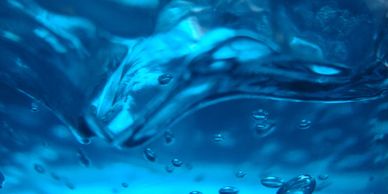Signed in as:
filler@godaddy.com
Signed in as:
filler@godaddy.com
Microbiological testing in water testing is essential to ensure that water is safe for human consumption and use. It involves detecting and quantifying microorganisms (like bacteria, viruses, and protozoa) that can cause waterborne diseases. The primary goal is to ensure the water is free from harmful pathogens that can cause diseases such as cholera, typhoid, dysentery, and gastroenteritis.
Chemical testing in water testing involves analyzing water samples to detect and quantify the presence of various chemical substances. This type of testing is critical for evaluating the safety and quality of water, ensuring it meets regulatory standards and is safe for human consumption and other uses. Chemical contaminants in water can come from natural sources, industrial processes, agricultural runoff, or pollution.
Physical testing in water testing involves measuring the physical properties of water to assess its overall quality. These tests do not directly identify harmful microorganisms or chemicals but provide valuable information about the water’s clarity, color, temperature, and other characteristics that can affect its usability, taste, and safety. It is necessary to evaluate how visually appealing or acceptable the water is for consumption, recreation, or industrial use.

pH testing in water testing measures the acidity or alkalinity of a water sample. The pH scale ranges from 0 to 14, where a pH of 7 is neutral (neither acidic nor alkaline). A pH below 7 indicates acidity, and a pH above 7 indicates alkalinity. The pH level of water plays a crucial role in its quality, affecting everything from its taste to its ability to support aquatic life and the effectiveness of water treatment processes. pH is an important parameter in determining the overall quality of water.

Hardness testing in water testing measures the concentration of dissolved minerals, primarily calcium (Ca²⁺) and magnesium (Mg²⁺) ions, in water. Hardness is an important water quality parameter because it affects water’s behavior in various applications, such as for drinking, industrial use, and household activities like laundry and dishwashing.

Dissolved Oxygen (DO) testing in water measures the amount of oxygen that is dissolved in water. Oxygen is essential for the survival of aquatic life, including fish, invertebrates, and other organisms. It also plays a vital role in the breakdown of organic matter by microorganisms. Therefore, DO testing is a key indicator of water quality, especially for the health of aquatic ecosystems and the effectiveness of water treatment processes.

Toxicity testing in water testing involves evaluating the harmful effects of water on living organisms. It is an important method used to determine whether water contains toxic substances that could harm aquatic life, animals, or humans. Toxicity testing helps identify contaminants in water that may not be readily detectable using conventional chemical or physical tests but are harmful to living organisms. Toxicity testing aims to assess the potential harmful effects of water on biological organisms, particularly aquatic species like fish, invertebrates, and algae.

Total Dissolved Solids (TDS) testing in water measures the combined concentration of inorganic and organic substances dissolved in water, including salts, minerals, and metals. These dissolved solids are typically composed of ions like sodium, calcium, magnesium, potassium, bicarbonates, chlorides, sulfates, and nitrates. TDS is an important water quality parameter because it gives an indication of the general cleanliness and salinity of water. These include minerals, salts, and metals (e.g., calcium, magnesium, sodium, chloride, sulfate).

Nutrient testing in water refers to the process of measuring the levels of key nutrients in water that are essential for plant and algae growth. The most common nutrients tested in water include nitrogen, phosphorus, and potassium, as well as other elements like iron, sulfur, and carbon. These nutrients are necessary for life but, in excess, can cause water quality problems, including nutrient pollution and eutrophication. Nutrient testing is commonly used to monitor water bodies, such as rivers, lakes, and groundwater, to assess their health and the impact of agricultural, industrial, or wastewater pollution.

Algae and cyanotoxins testing in water refers to the analysis of water samples to detect the presence of harmful algae and the toxic compounds they may produce. These tests are crucial for assessing the safety of water for both human consumption and aquatic life, as certain types of algae, especially cyanobacteria (often referred to as blue-green algae), can produce toxins that pose significant health risks.
We use cookies to analyze website traffic and optimize your website experience. By accepting our use of cookies, your data will be aggregated with all other user data.